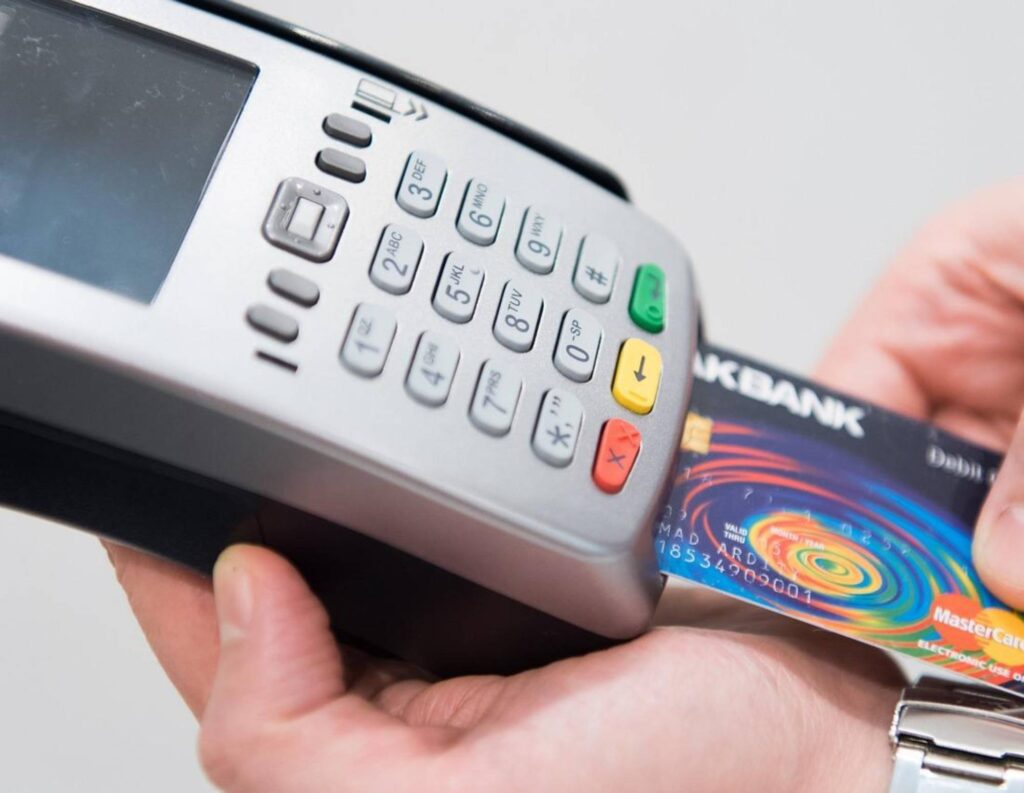Explore the 5 best credit small business card processing platforms to see which one will benefit your business the best in terms of ease of use, fees, and more.
According to the Federal Reserve, 83% of U.S. adults have at least one credit card. In partnership with Visa, HoneyBook also discovered that 80% of independent business clients prefer paying with a credit card.
If those two facts don’t already make it pretty obvious, credit cards are necessary for business these days. Even if you’re a service provider, client expectations are so shaped by the convenience of Amazon and other online stores. Clients expect a quick, secure payment process that makes them confident they’ll get what they paid for.
To get started, it’s important to know how small business credit card processing works and what to look for to find the best credit card processing solution for your business. Below, explore the top five options for independent businesses:
Jump to:
- The benefits of credit card processing
- What to look for in your credit card processor
- Square
- HoneyBook
- PayPal
- Stripe
- Dharma
- Using a business platform with integrated payment processing
The benefits of credit card processing
By accepting credit cards, you can offer multiple payment methods to your clients. We’ve already mentioned how prevalent credit cards are for consumers, but that doesn’t mean you need to limit your business. You can also accept ACH transfers and debit cards as other forms of online payments.
With credit cards specifically, you can accept payment faster from your clients. Credit card payments typically take 2-3 days to deposit into your bank account (depending on the processor), while ACH transfers can take 7-8 business days.
Especially if you have a high sales volume, credit card payments can help you maintain a more consistent cash flow. You’ll have more money coming in a timely manner, versus waiting for ACH transfer payments, cash, and check.
Without a credit card processor, you’re responsible for setting up a merchant account and payment gateway. This type of setup is complicated and isn’t typical for a small business to handle on its own, which is why third-party payment processors are the better option.
What to look for in your credit card processor
You really have a lot of options when it comes to software tools — maybe too many, in fact — but there are a few that have really risen to the top, proving themselves better than most of their competition.
Not all payment processors are alike, and there are a few key features that you should look out for:
- Integrations – Payment processing is just one step of your booking process and overall clientflow. The most valuable credit card processors should also offer invoicing and can connect with other actions, like scheduling
- Customer service – Unfortunately, accepting credit cards means your business will be more susceptible to payment disputes and fraud. Keep an eye out for credit card processors with great customer service, so they can advocate for you when there’s a payment chargeback or dispute
- Payment processing fees – All payment processors have transaction fees, but they can vary in terms of the base fee, the fee based on sales volume, interchange fees, and more
- Available pricing structures – You may have one-time, membership, or other pricing structures in your business. The credit card processing solution you use must make it possible to charge clients the way you need to
We’ve put together five of the best credit card processing solutions so you can compare and select the best option for your business. Keep in mind that the five options below are oriented towards a purely online business, but some of them do have applications for brick-and-mortar stores as well.
1. Square
Square is an ideal small business credit card processing solution for businesses that need to swipe cards in person. The company’s mix of hardware and software makes it simple on almost any mobile device. The company charges reasonable processing fees, and you can take advantage of add-on services for things like marketing, payroll, and team management.
Invoicing
Square offers simplified invoicing using their mobile app or their online platform.
Payment types
You can accept Visa, MastercardVisa, Mastercard, American Express, JCB, and UnionPay with Square.
Transaction fees
Transaction fees cost between 2.6% of the transaction plus $0.10 and 3.3% of the transaction plus $0.30, depending on the type of payment used and whether or not the card is present at the time of the transaction
Other features
You can access add-ons to help you with marketing, employee payroll, and more.
Pros
- It’s free to get started, simply pay transaction fees as you make sales
- A wide range of hardware to meet various business needs
- Fair pricing with no monthly fees for basic services
Cons
- Lower fees may be available elsewhere if you process a high volume of transactions
- There is no over-the-phone support
- There are some complaints online about account freezes that are likely due to irregular activity
2. HoneyBook
HoneyBook isn’t just a small business payment processing solution; it’s a complete clientflow platform. The platform automates many of the mundane tasks associated with booking, onboarding, and charging customers, and it offers detailed reporting that could help you further optimize your workflow.
Invoicing
Easily create, send, and manage professional invoices on the platform.
Payment types
You can accept checks, ACH, and credit card payments with HoneyBook.
Transaction fees
You’ll pay 2.9% plus $0.25 per Visa/Mastercard transaction to process credit card payments, 3.4% + $0.09 for AMEX and Discover transactions, and 1.5% of the transaction to process ACH payments. Membership fees are between $16 and $79 per month, depending on the package you choose and whether you pay monthly or bi-annually.
Other features
Other core features include scheduling and booking that can be automated, the ability to build and digitally sign agreements, detailed reporting, automatic reminders, and more.
Pros
- HoneyBook offers much more than simple payment processing; it’s an all-in-one clientflow platform
- The platform makes it simple to automate mundane tasks so you can focus your time elsewhere
- They offer reasonable pricing
Cons
- The HoneyBook mobile app may not be as intuitive as the desktop app
- There is a short learning curve to the platform since it offers a wide range of services outside of payment processing
- HoneyBook may not be fitting for enterprise-level customers
3. PayPal
offering online payment processing services for over two and a half decades. The platform makes it easy to send professional, customized invoices, take advantage of recurring transactions, and more. And since it’s a household name, it’s typically trusted as a secure payment option among consumers.
Invoicing
It is easy to create and send invoices. Users can also pay those invoices digitally as soon as they receive them.
Payment types
Accept all major credit cards, ACH payments, and payments from digital wallets.
Transaction fees
Transaction fees range from 2.29% plus $0.09 to 3.49% plus a predetermined fixed fee, depending on the type of payment used and whether or not that payment method is present at the time of the transaction.
Other features
Other core features include the availability of a chip reader and detailed reporting that can help you optimize your business processes.
Pros
- It’s free to open a basic account—just pay your transaction fees
- Easily send invoices that give your clients the ability to pay on the spot digitally
- They offer fair pricing
Cons
- Offers hardware for in-person transactions, but that hardware isn’t as sleek as that offered by Square
- PayPal’s features are mainly geared toward online businesses
- PayPal is known to be relatively aggressive with account freezes. If your account is frozen, it can take some time to thaw it out and access any money you have in it
- PayPal isn’t a strong option for businesses that process a high number of transactions or high dollar amount transactions, as those businesses will likely find lower cost options elsewhere
4. Stripe
Stripe is most well-known as a payment processing solution for online transactions. The company charges reasonable processing fees and offers strong customer support. On the other hand, this isn’t a strong option for business owners who aren’t technology-savvy.
Unless you’re adding Stripe payments to an online marketplace that already has it available, you may need to do a bit of programming to get it to work the way you want it. Nonetheless, it’s a strong option for tech-savvy business owners or those with employees who have strong tech skills.
Invoicing
Stripe makes it easy to build and send invoices to your clients.
Payment types
You can accept credit card, ACH, and digital wallet payments.
Transaction fees
Stipe charges 2.9% of the transaction plus $0.30 for user-entered credit card transactions and 3.4% plus $0.40 for card-on-file transactions.
Other features
It’s easy to integrate with many e-commerce platforms like WordPress, Shopify, and SquareSpace. However, it may take some programming if you operate a custom website.
Pros
- Easy to integrate into some e-commerce-centric platforms
- Reasonable fees
- Quality customer support
Cons
- Some programming may be required depending on your intended use
- While fees are reasonable, there may be lower-cost options depending on the volume of your sales
- There may be a significant learning curve for some users
5. Dharma
Dharma is a small business credit card processing solution that is particularly fitting for non-profit corporations that need to take part in credit card acceptance. While it’s available to for-profit corporations, the platform charges lower fees for non-profit companies.
Invoicing
Easily send electronic invoices to clients.
Payment types
Accept Visa, Mastercard, American Express, and Discover payments
Transaction fees
Non-profit transaction fees typically range from 1% to 2.5% of the transaction, which can be significantly lower than other options. For-profit transaction fees are listed as being higher, but not offered on the company’s website.
Other features
The platform offers a customer database that can safely store credit card information
Pros
- Non-profit organizations can realize significant savings on transaction costs
- It’s possible to pass processing fees on to your clients
- It’s easy to integrate into most businesses
Cons
Doesn’t offer many of the business tools you’ll find with other providers on this list
Fees can be relatively high for for-profit companies
Dharma’s integrations are limited
Using a business platform with integrated payment processing
of which are excellent tools, how do you pick which one is for you? Which company offers the best credit card processing services for you?
Well, the answer really is: it depends.
There’s an almost infinite number of criteria we could use to measure exactly which piece of software was the absolute best credit card processing tool.
However, if you manage a business, you likely handle much more than payment processing. We recommend looking for a platform that enables you to combine payments with other steps in your process, like capturing leads, vetting inquiries, and managing projects.
Overall, HoneyBook is the only all-in-one business platform that offers credit card processing and more, specifically for independents. If you do focus more on e-commerce, brick-and-mortar sales, or nonprofit work, the other options we mentioned may be a better fit.





